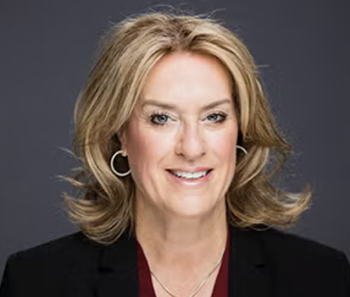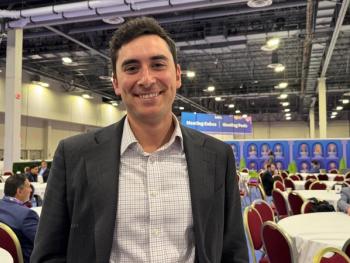
Nursing gets 1% of healthcare donations
The nursing profession receives a penny for every dollar donated, the American Nurses Foundation says. Kate Judge, the executive director, says hospitals are missing opportunities to support nurses and improve patient care.
It’s a season of giving, and nurse leaders would like to see donors directing their philanthropy to support nursing.
Hospitals and health systems also should think about nursing as a higher priority in their philanthropy goals, a new report suggests. While donors tend to be generous in support of healthcare, a slim portion of charitable giving is directed to nursing, according to a report from the American Nurses Foundation.
From 2015 through 2022, private donors contributed $333 billion to healthcare, but only 1% of those donations were directed to nursing, the report states. Put another way, only one penny of every dollar donated to healthcare is earmarked for the nursing profession.
Kate Judge, executive director of the American Nurses Foundation, has spent years in philanthropy. She expected the report would show nursing gets only a small portion of charitable giving to healthcare, but even she was surprised by the findings.
“I knew it was going to be small. I didn't realize it was going to be this small,” Judge tells Chief Healthcare Executive®.
“It is a surprise, but it's something that can get fixed,” she says. “And so that's part of what we wanted to do was to shine a light on this.”
Many hospital and health systems leaders have said
“Everyone who's a healthcare executive is keenly aware and spending a lot of time worrying about the nursing workforce,” Judge says.
Judge says there’s an odd dichotomy, since nursing is regularly regarded as among the most trusted professions. She sees a “misalignment” because the public understands how much time nurses work with patients in hospitals and other healthcare facilities.
“For me, it's really about a missed opportunity for all of us, as a community, as a patient or a child of a patient or a parent to a patient,” Judge says. “We're not investing in nursing expertise.”
The small amount of philanthropy directed toward nursing may not be intentional, but could reflect a lack of inclusion, Judge suggests.
“I think the reason that there's not more giving is probably because nursing is not as visible at the table that sets the fundraising priorities,” she says.
She also notes that there aren’t many nurses on hospital boards.
“It's not out of intent to exclude them,” Judge says. “It's just a matter of not really knowing how to include them.”
The foundation report calls for greater investments in nurse leadership. Only 3% of grants for nurses focus on investing in nurse leadership or nurse-led innovation, the report found.
“I was surprised at how little investment there is in nursing leadership,” Judge says. “You know, there is some, but there needs to be more. Those nurse leaders need support.”
The report also suggests pushing for more donors to support diversifying the nursing profession. Only 1% of grants are designated toward adding more diversity to the nursing workforce.
Philanthropy can be an important tool in helping build a nursing workforce that reflects the communities being served, she says.
“You really need to look at diversifying the workforce, both again in the pipeline, starting early, for people to see themselves and have examples to identify with that are in nursing and successful in nursing, and then to make the environment a place that is welcoming and respectful and supportive and inclusive,” Judge says.
Hospitals and health systems should look at fundraising in a different way, she suggests.
“I don't think that they're necessarily as creative as they can be about philanthropy,” Judge says. “It's about more than just buildings.”
Hospitals and health systems should be looking to connect with donors, and find stories and examples of where giving could make a difference. Nurses can be very effective in making that connection with donors, but Judge says that’s not a common practice.
“There's a sort of practice of engaging physicians with donors more than engaging nurses with donors,” Judge says. “And again, I think that's a missed opportunity for organizations that have sophisticated fundraising approaches that they're not maximizing the knowledge and expertise that nurses have for positive transformation.”
Hospitals that are looking to raise more money should find out what donors care about, Judge says. She recalls giving a donation to support nursing at one institution, because she was moved by the care nurses provided to a loved one. But in subsequent years, the institution asked for donations for other areas, rather than nursing, where Judge had already expressed a willingness to provide financial support and even testimonials.
“They're missing an opportunity for someone to say, ‘I want to support that extraordinary profession that made my life better in the most hard and vulnerable times,’” Judge says.
Hospitals and health systems should utilize the power of philanthropy to find ways to develop nurses and help them thrive in their organizations, she suggests.
“Our message is just that it's imperative that nurses be engaged and supported, and that the benefit is to patient care and to the system of delivering healthcare,” Judge says. “Because if we don't support nurses, we won’t have quality healthcare.”








































